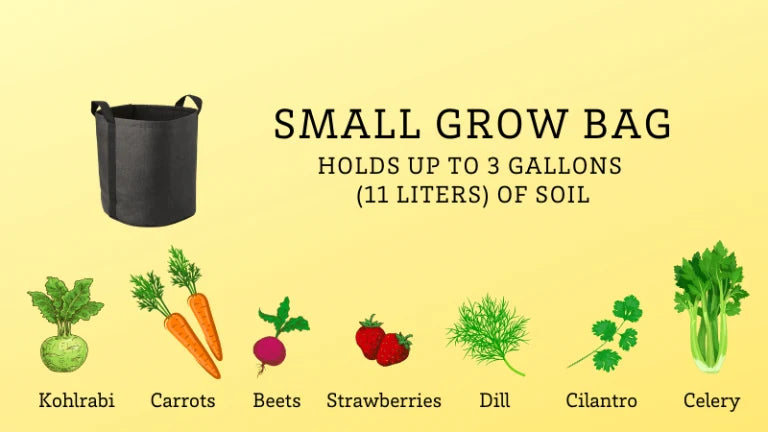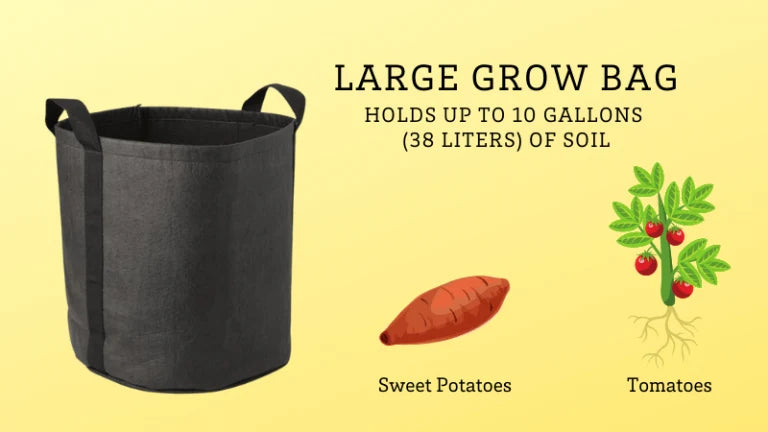No Products in the Cart
Tips on Gardening in Grow Bags

Gardening in grow bags is a simple way to begin gardening almost anywhere. Pick up a few bags, fill them with soil, and you’re ready to go.
It’s easy to see why grow bag gardening is becoming a popular option for new gardeners and gardeners who are looking to add more space to their gardens.
Advantages of gardening in grow bags
Some of the advantages of grow bag gardening include:
1. Grow bags are an inexpensive, easy way to add growing space. Look for good quality grow bags that will last many seasons.
2. Gardening in grow bags prevents overwatering. Excess water drains through the fabric and prevents soggy soil and roots. Look for good quality grow bags; they should have excellent drainage.
3.Grow bags are easy to store when not in use. Clean them out by spraying off well, and then fold them up and let them dry.
4. Unlike most containers, grow bags allow plants’ roots to breathe. Happy roots mean a happy plant. This is one of the biggest advantages of grow bag gardening.
5. The ability to move grow bags easily to the best location. Look for a sunny spot in cool climates or give them shade in hot climates.



5 Tips for Successful Grow Bag Gardening
1. Choose the right plants to grow in grow bags
Because grow bags limit the size of the roots and available water, some plants are better suited to grow in grow bags than others.
When choosing which plants to grow in grow bags, look for “dwarf” varieties. These are smaller versions of full-size plants that do better in grow bags. Also, select “bush” or “compact” varieties rather than vining types.

2.Use oyas or self-watering grow bags for thirsty plants
Because grow bags dry out more quickly, certain crops will do better if grown with an oya or in a self-watering type grow bag.
Self-watering grow bags have a self-watering reservoir in the base. You keep the reservoir full and there is a constant supply of moisture for the roots.


3.Choose the correct size grow bag
Wondering which size of grow bag to choose? Look at plant spacing guidelines for the plants you would like to grow.
The chart gives general guidelines about which size of grow bag to choose for common vegetables, fruits, and herbs.




4.Fill your grow bag with the best type of soil
Regular garden soil is too heavy for grow bags; it will become compacted.
The best soil for grow bags is a combination of:
compost
vermiculite
coconut coir
or peat moss
Look for bagged potting soil that has a combination of these ingredients, or make your own.
When using this mix, the soil remains light and airy; it does not get crusted or compacted. Plants’ roots need oxygen as well as water, and roots love this mixture.
It is important to fill bags all the way up with soil to take advantage of the room inside the grow bag.


5. Put your grow bag in the best location
A major advantage of gardening in grow bags is the ability to put the bag in the best location based on the amount of sunlight it receives.
Most plants grow best with at least 6 to 8 hours of sunlight. Morning sun is preferred and a little afternoon shade is ideal, especially if you live in a hot climate.

